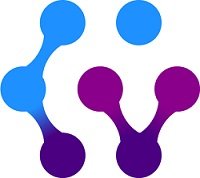CyberVein (CVT) - "Blockchain’s Scalability Problems Can Be Resolved by the Implementation of DAGs"

Opinion: Blockchain’s Scalability Problems Can Be Resolved by the Implementation of DAGs

Just as the range of social networks has expanded to a number of different platforms with different underlying attributes and capabilities, crypto platforms will proliferate for every kind of use case and requirement. Crypto technology is almost synonymous with blockchains, but this is rapidly changing and with important implications.
The DAG is coming
The central concern of cryptocurrency technology is preventing a very simple but fundamentally threatening activity: double-spending. This is where an actor uses the same funds twice, paying for multiple transactions thus defrauding the payees. Viable currencies need to be scarce as a token of value; in order to ensure scarcity, conventional currencies are centrally issued while cryptocurrencies rely on a cryptographically protected, collectively-shared ledger as a unique source of truth.
Blockchains achieve this by (as the name suggests) linking blocks of transactions together in an immutable chain of information that is duplicated on each node of the network. This is as resource and computation intensive as it sounds; it is literally like needing a copy of everyone’s bank data on your computer in order to make an online banking transaction. While this works well enough for simple payments, it becomes prohibitively resource-intensive when more complex and novel applications (which we’ll discuss later) come in to play.
The solution that was found was to switch up the design of these ledgers to make them more efficient. The cryptoshpere is constantly expanding and tinkering to tailor hybrid platforms to specific use cases.
One breakthrough is called Directed Acyclic Graphs (DAGs), a concept already used in network theory. “Graph” is just another name for a network or web of nodes, “Directed” means that the connections between 2 nodes are one-directional, meaning that interactions (information, value, etc.) is defined as a one-way relationship between nodes, and “Acyclic”, could be explained as “moving from node to node by following the edges, you will never encounter the same node for the second time”.
This is a little complex, but complexity is actually the point of this data structure; instead of requiring that every node take full participation in recording and processing every transaction, DAGs rely on complexity and interconnectedness to create the cryptographic walls that prevent double-spending and other opportunistic behaviour. This complexity is ensured by the nature of how new nodes are added to the DAG; in order to prevent a more centralised network where a few central nodes are connected to many others (a “wider” network), DAGs ensure connectedness adding new nodes in a determined way.
The result is a mesh of nodes that rely on each other for transaction validation; also called a “tangle”, DAGs move the locus of cryptographic robustness from the block level (as with blockchains) to the whole network itself. As the network expands, more nodes are layered onto the tangle, allowing an interreliant but efficient means of sending transactions across the network. Confirmations are made not with new blocks as is the case with blockchains, but with new transactions with each confirming the previous transaction.
What is the difference that DAG makes?

So it’s clear the design underpinning DAGs is novel and interesting, but what this all achieves is another question. Put simply, DAGs are much more lightweight than blockchains. They don’t involve mining, instead relying on users confirming transactions in the process of placing their own transactions. In usual cases the currency on the network is premined, making it deflationary like bitcoin. The transactions per second and the speed of those transactions are far more business-ready than other crypto paradigms as a result. As one DAG-based project, CyberVein, explained:
“DAGs, if used correctly and for the right purposes, hold the potential of overcoming blockchain’s scalability problem. Since each transaction entails the approval of two previous ones, the network’s speed increases exponentially with its size. The lack of blocks and the mining thereof means that transactions occur “on the fly” and not in clumpy intervals, the “block-size debate” is rendered irrelevant, and the dangers of centralized hashing power are mitigated significantly.”
Platforms like CyberVein are leveraging DAG’s capabilities to create secure, but more efficient ledger solutions. Whereas the likes of bitcoin made trustless transactions possible, DAGs are being used by companies to do things that are impossible with blockchains. Systems that require fast and flexible payment capabilities, especially where many low-value transactions are to be sent throughout the day, all but require such capabilities. The most well-known is IOTA, a platform that meshes ledger technology and Internet-of-Things use cases.
These use cases involve sensors that monitor many data points and tend to send thousands of transactions and messages each day. Blockchains are very much incapable of handling such throughput in most cases. DAGs are certainly looking like the only option for IoT-ledger use cases.
Disclaimer: The views expressed in the article are solely that of the author and do not represent those of, nor should they be attributed to CCN.
Images from Shutterstock
CVT on Coinmarketcap
https://coinmarketcap.com/currencies/cybervein/#social
CVT on Youtobe
https://www.youtube.com/channel/UCpIgOnNTu4FPFsa9LBdQjCw
Hi! I am a robot. I just upvoted you! I found similar content that readers might be interested in:
https://www.ccn.com/blockchains-scalability-problems-can-be-resolved-by-the-implementation-of-dags/
@cheetah u're good ;)